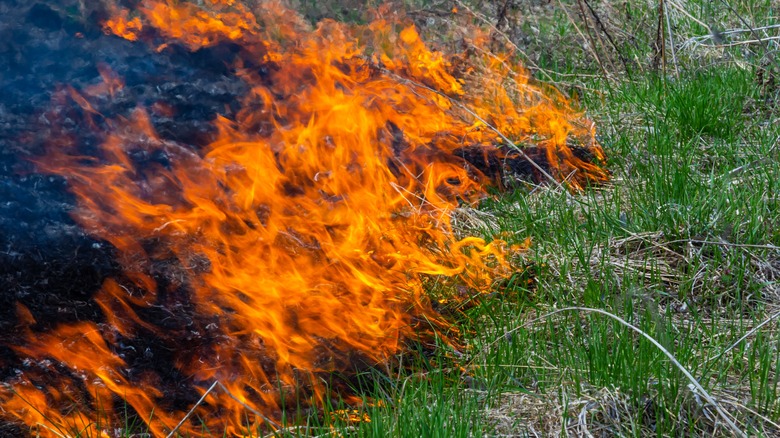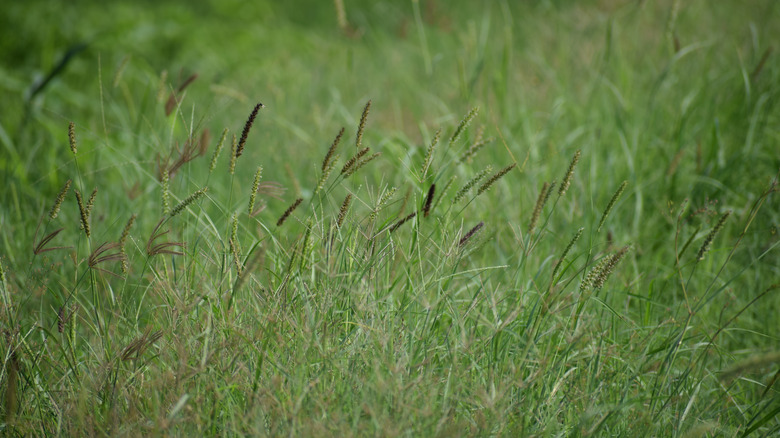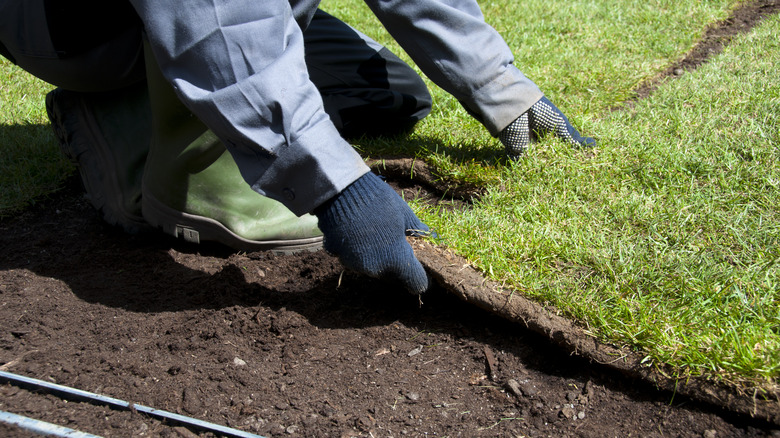The Invasive And Highly Flammable Grass You Should Avoid
Any proud homeowner only wants what is best for their lawn, but what happens when an unwanted plant threatens the health and safety of your yard everything that grows in it? Initially brought to the United States in the 1930's, buffelgrass (Cenchrus ciliaris) has since been listed and regulated as a noxious weed. It seemed like a good resource because of its ability to tolerate droughts as well as its resistance to heavy grazing. While it's native to Africa, Asia and the Middle East, the plant is most commonly found in southwestern parts of the United States like Arizona, California, New Mexico, and Nevada. It's not uncommon for it to also be found in places as far east as Alabama and Florida.
Buffelgrass can be identified by its flat and thin bluish-green leaves that spurt from thin cylindrical stems that can grow up to almost 5 feet in height with grayish-purple seed heads that are roughly 5 inches long. Buffelgrass is mainly still used as a pasture grass in farmlands but its seeds can find their way into your yard by air, water, your pet's fur, or by latching onto your clothes and shoes. Buffelgrass is an invasive plant you never want to grow in your yard because of its ability to damage your existing plants and quickly spread fire if it is exposed to flames.
Why buffelgrass is such a problem
Buffelgrass grows in dense strands that can invade your other plants' space by crowding the soil, robbing them of precious resources and compromising plant richness. It's a highly invasive plant that can harm the ecosystem around it.
It spreads quickly and its roots can grow up to 6-8 inches into the soil. This crowds the roots of plants that are already in your garden, robbing them of water and nutrients. When dry, the bluish-green fuzz develops a rough texture and the buffelgrass can act like kindling and provide fuel loads for fires. The grass is at its most flammable when it is dry since it can spread fires easily.
There are many ways to keep invasive plants from taking over your garden, but the easiest and simplest way is to keep up with a regular schedule of mowing your lawn, hoeing, and hand-pulling weeds. This will allow you to remove the entire plant by its root and it can decrease the chances of it spreading its seed if done early enough
Keep buffelgrass at bay
Some people may be tempted to opt for artificial grass after dealing with an invasive weed species in their garden. While it may seem like a low-maintenance alternative, artificial grass might not be a great idea in the long run. Artificial grass is not good for the overall health of the soil in your garden since it disrupts the flow of water and nutrients as well as the insects living in the soil that are vital to the health of your garden.
If you want to attract pollinators to your garden, it would be best to opt for a natural and resilient alternative. The University of Arizona suggests drought-tolerant perennial grasses like pampas and Chinese silver grass are great alternatives that can compete with buffelgrass by keeping water and nutrients from the weed in the initial stages of its invasion. Regularly mowing your lawn and pruning your plants is a good way of keeping this invasive and flammable grass from taking over your garden and easily spreading fires.


